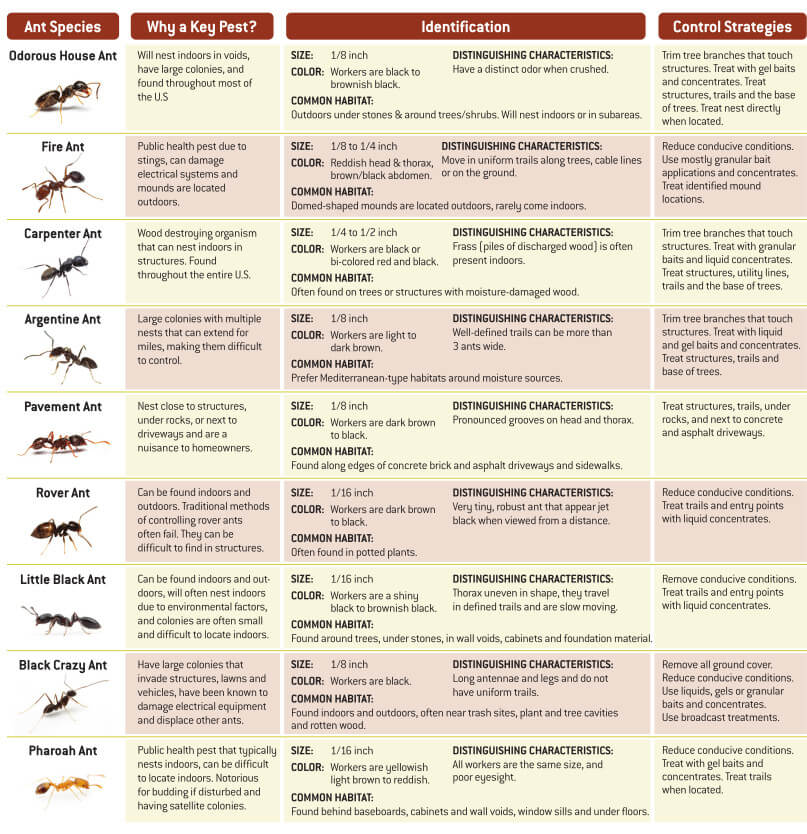Ant species have different needs, habits, and preferences and these variations can be significant. Controlling ants, like many types of pests, will depend on properly identifying the species and knowing the habits, food preferences and needs of the specific species you are dealing with.
For instance, carpenter ants nest in damp, decaying wood and are one of the few species that cause structural damage. Odorous house ants will readily nest in wall voids around warmth and moisture and have a pungent odor when crushed. Big-headed ants are soil nesting and are often found under stones or wood and indoors in potted plants.
There are many more species, all with unique characteristics. However, ants also have similarities that can help you when you are trying to treat:
- One thing almost all ants like is the sweet honeydew aphids excrete. Controlling aphids will likely help you control a nearby ant colony if you see ants tending them.
- Other things you can do that are helpful for most ant species are to remove any plants that are touching the home. They provide easy access for ants to trail from something like a tree branch onto the roof and inside.
- Seal entry points around windows, door thresholds, wires, and exterior faucets. Sanitation and removing excess water will reduce the likelihood of foraging ants in the area.
These are some good starting points. The more you know, the better you will be able to solve each customer’s unique ant problems so keep reading to learn more about ants.
Key Ant Pests:
How to Identify Them and Control Them
More Resources
- Download a PDF of the Key Ant Pests Chart
- Read the latest version of MGK’s PMP Pulse Newsletter for more information on ants and tips on ant control.

